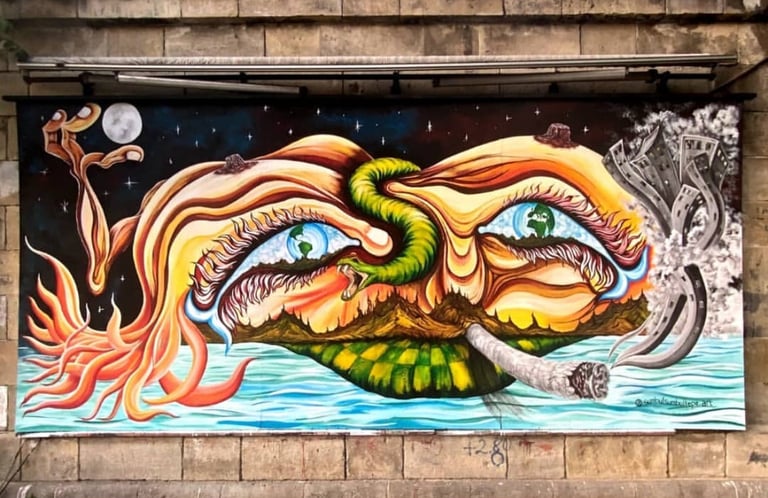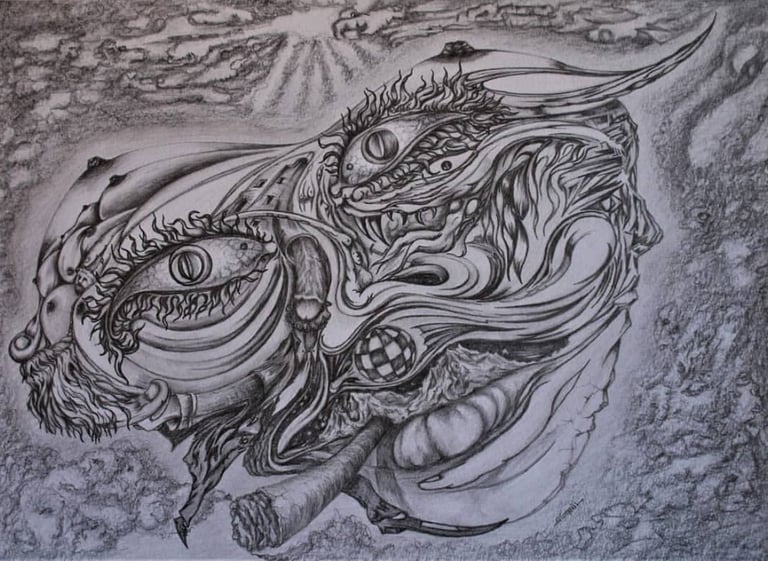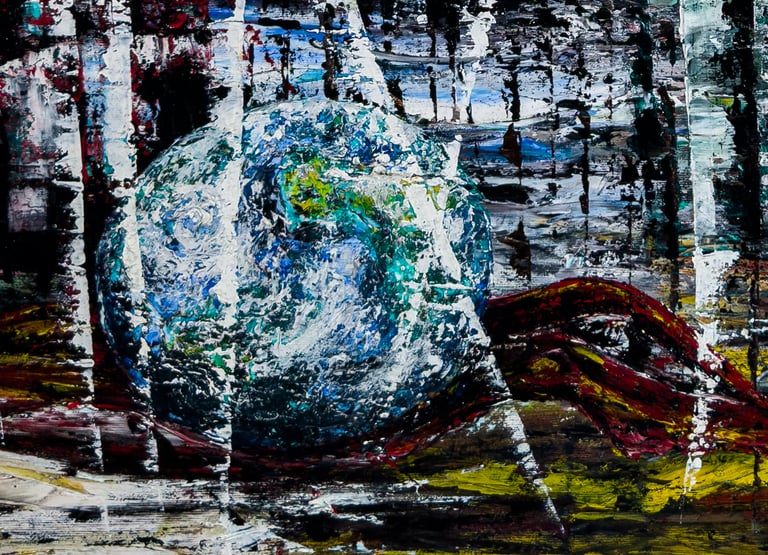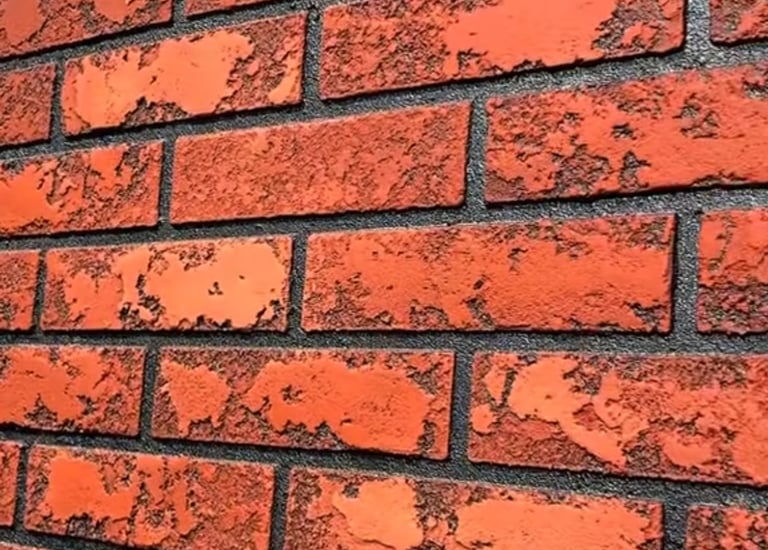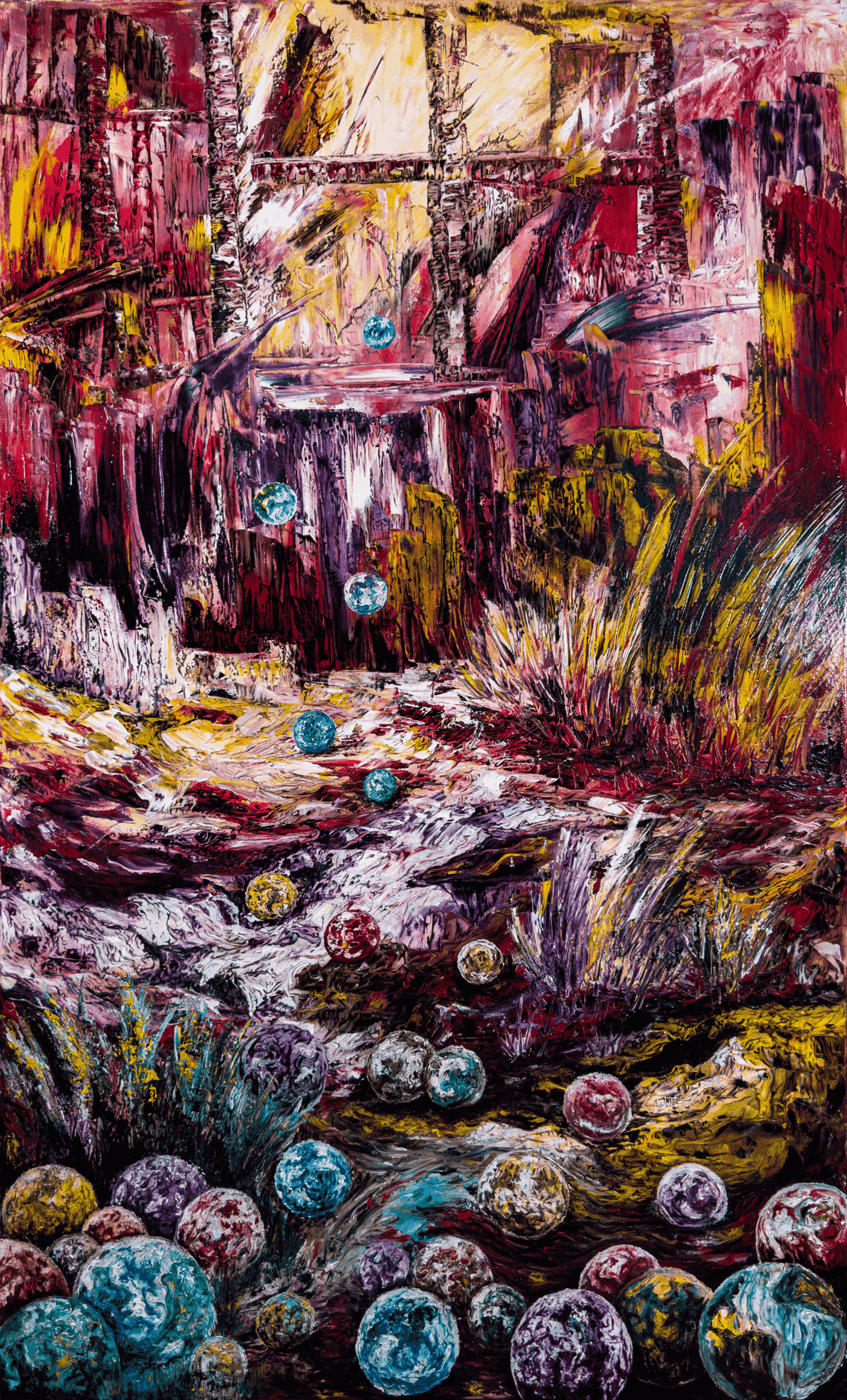
Sümbül Sümbültepe was born in 1974 in İskenderun, Turkey. He discovered his talent for painting during his primary school years. As a child, he received his first warning from the system for drawing based on his own imagination rather than sticking to the assigned subject during art classes — in a sense, this was his first “brush” with authority. This early confrontation carried the first signs of the protest-oriented approach that would later become central to his art.
During high school, his oil paintings were censored in a group exhibition organized at school. This experience made him deeply feel the disturbing power of art and how limited the spaces for free expression could be.
He attempted to enter the Faculty of Fine Arts once, but after failing, chose not to try again. He believed that a more independent artistic path would be more suitable for him. Nevertheless, he enrolled in three different departments at three different universities, but did not complete any of them. His inability to connect with academic structures led him toward a freer and more authentic understanding of art.
From the age of 18, Sümbül Sümbültepe began to confront life and the system. As his questioning deepened, he became aware of a fundamental contradiction within himself: his mind was still living in the hunter-gatherer era, while his body existed in the present day — trapped within the rules and artificial structures of the modern world. This inner conflict gradually became central to his art.
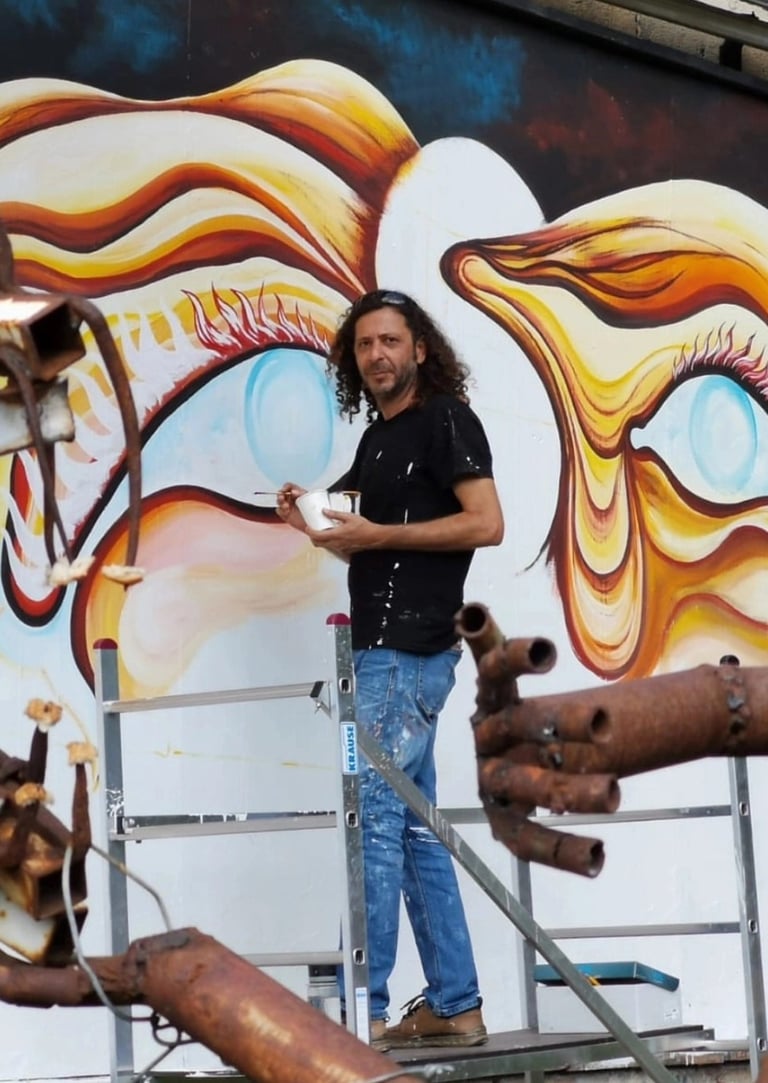

In 1999, he moved to Olympos and lived for 14 years in the forests and mountains. His bond with this ancient city, surrounded by nature, drew him toward mythology. In a manner of speaking, he formed a connection with mythological gods and the spirit of nature itself. This period allowed him to clearly see the underlying corruption in the relationship between humans and nature. In his eyes, humans were not beings who adapted to nature, but ones who sought to dominate it — who pushed its limits and depleted its resources. He began to see humanity as a virus clinging to nature — multiplying, consuming, and destroying like a cancerous cell. This awareness further transformed his art. His paintings turned toward a more abstract language and surreal forms. He now brought not only the contradiction between humanity and nature onto the canvas, but also his own existential conflict. These two struggles, for him, stemmed from the same wound — turning his art into both a personal quest and a universal inquiry.
Get in Touch
Our only true insurance is nature itself.
MURAL WORK
Art & Natura Live Painting Performance
from July 2025
Schwedensbrücke am Kanal, Vienna
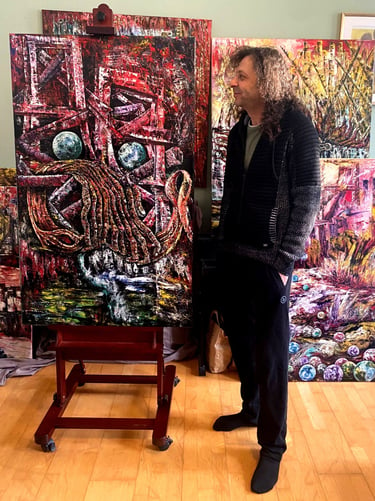

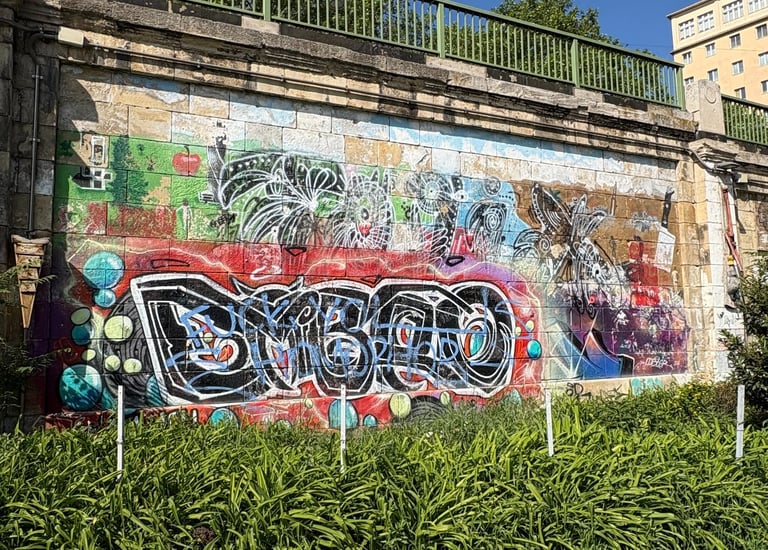

For this reason, he preferred to take his paintings to the streets rather than exhibiting them in galleries for a limited audience. The street was a space where everyone could see them — a place of direct confrontation with the system. In his wall paintings especially, Sümbültepe adopted a more explicit and protest-driven tone.
During the 14 years he spent in Olympos, Sümbül Sümbültepe paused his oil painting practice; during this period, he focused on street murals and surreal charcoal drawings. However, beginning in 2013, influenced by his bond with nature and the thoughts he had developed on the human-nature relationship, he returned to the canvas. With the insights he had gained, he began to produce oil paintings independently. He created this new body of work under the title The Chess Mechanisms of the Earth, which he plans to exhibit in private galleries in the near future.
Sümbül Sümbültepe’s work has been featured in national and local newspapers and magazines to date. Through his oil paintings and murals, he continues to express his critique of the system, the conflict between nature and humanity, and individual quests.
Since 2019, the artist has been living in Vienna, Austria.


